What is the daily amount of food for a kitten?
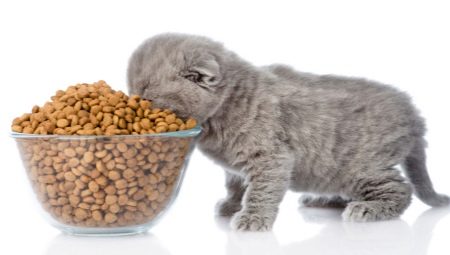
In order for an ugly kitten that appears in the house to eventually turn into a healthy, active and beautiful pet, it is important to feed it correctly from childhood. Irresponsible owners do not worry about this and feed the animal with food from the table, without even realizing that, for example, kittens should not eat dairy products. Natural food for feeding is quite acceptable, but the difficulty is the competent calculation of proteins, fats, carbohydrates and other elements important for the health of a kitten. Therefore, it is easier to buy ready-made feed, in which all the necessary substances are already balanced.
The importance of eating the right diet
Owners who do not pay attention to what the kitten eats soon face serious problems. If the signs of poisoning from expired milk are noticeable immediately, then the harmful effects of many harmful natural products are revealed gradually. Alas, symptoms are often observed late.
With an improper diet, the kitten's kidneys, liver, and other digestive organs are damaged.
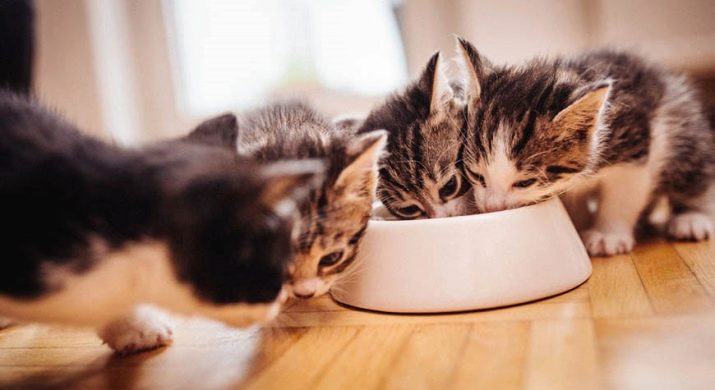
Animals whose food portion is not regulated are prone to weight gain, and from here begin urolithiasis, diabetes mellitus and other problems. Diseases of the teeth and mouth, skin diseases, and allergies become serious consequences.
It is very important at an early age, when the kitten's stomach is just getting stronger, to lay the foundation for a long and healthy life.
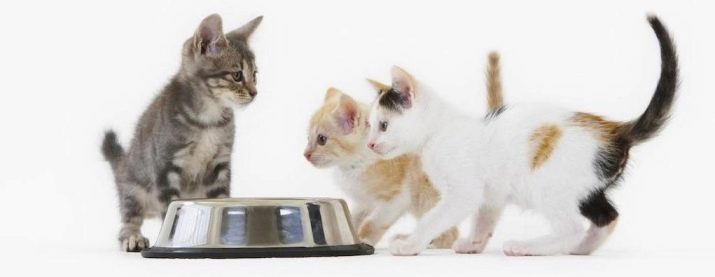
Feeding rates depending on age and weight
Up to six months of age, the kitten gains 100 grams of weight per week.In six months, the growth of the animal stops, and the mass continues to increase. However, these indicators do not apply to each individual, since there are breed characteristics. For example, the final weight and size of the Maine Coon is established only at two years old, and up to this age, the pet of this breed grows rather slowly.
Having studied the characteristics of the age and weight of the pet, it will be easier for the owner to calculate the required daily portion of food.
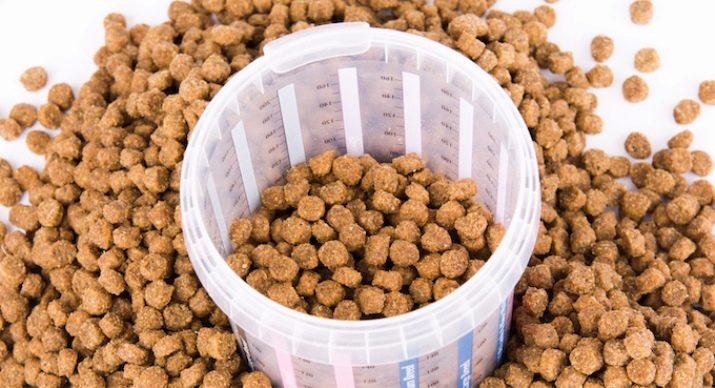
The older the kitten becomes, the less energy its body spends, which means that as it grows, the amount of daily feed should be reduced.... So, if a very tiny baby needs 48 g per 1 kg of weight per day, then from 4 months this portion is reduced to 32 g per day, and from 7 months this indicator is completely equal to 24 g. To accurately calculate the feeding rate, you can use an ordinary measuring cup. It is sold at the pet store.
Such utensils not only make it possible to properly feed your pet, but are also a fairly convenient container for pouring dry food. Pouring dry granules out of the bag is more problematic.
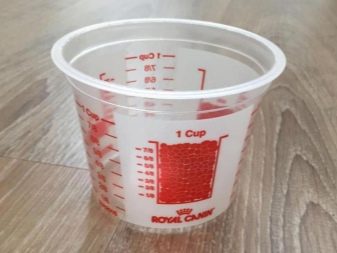

Calculation of the amount of food depending on the type of feed
Ready-made cat food from different manufacturers differ in nutritional value. In order not to be mistaken with the dosage, manufacturers put on the package a table of age and weight, as well as the recommended serving size for a particular animal.
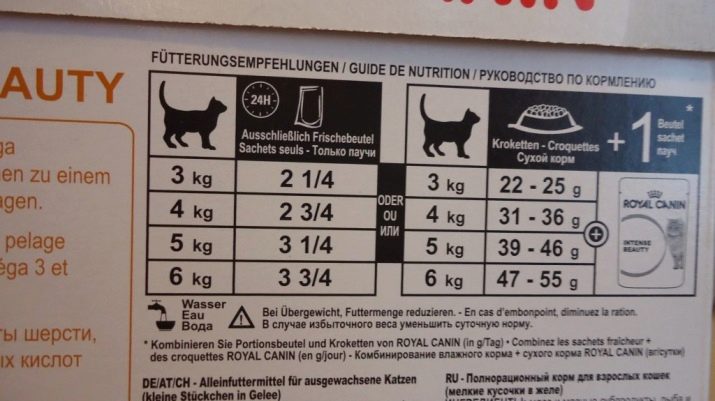
Dry
Dry food are granules, similar in structure to ordinary croutons. They contain meat, cereals, vegetable products. All components are dried using a special technology. The convenience of dry food is that they can be left in case the owners need to leave for a long time, for example, for a day.
Leaving a large portion in the bowl helps the owner not worry that the animal will go hungry or the food will go bad.
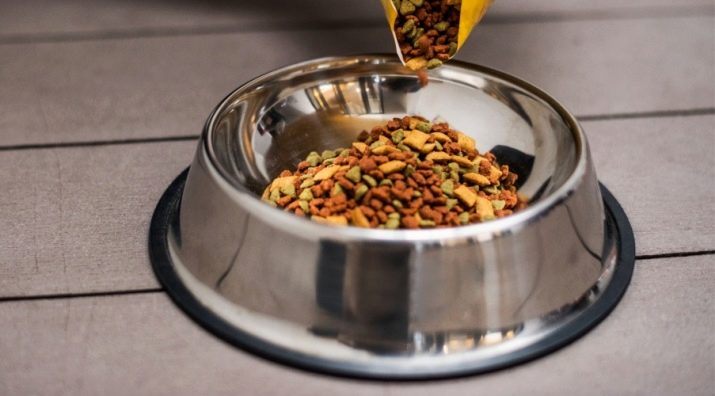
The disadvantage of dry products is a small amount of moisture, maximum 10%. In this regard, it is very important that a kitten fed with dry food always has access to fresh water. When choosing dry food, try to avoid economy-class products, choose products from the premium and super-premium categories. Many of them produce special food depending on the age and weight of the pet, for example "For kittens from 3 months" or "For cats prone to weight gain." On average, the amount of dry food is calculated as follows.
| Kitten age (months) | Daily dose (g) |
| 1-2 | 30-50 |
| 2-4 | 40-65 |
| 4-6 | 55-70 |
| 6-12 | 60-80 |
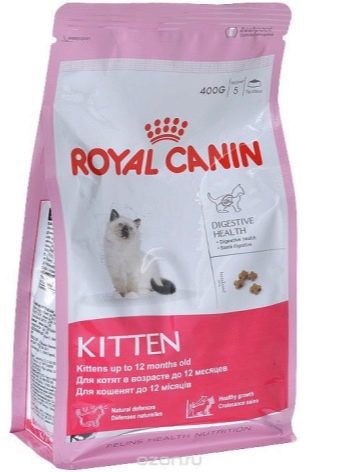
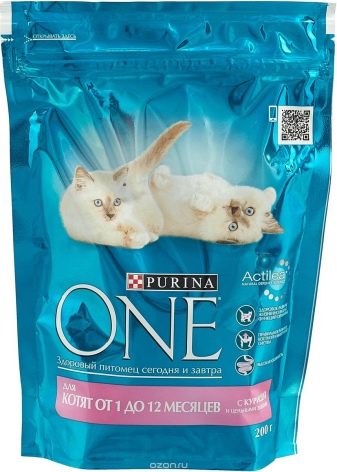
Wet
Wet food can be found at pet stores in canned food or in sachets. This variety looks like pieces of meat, drenched in sauce. The composition contains various types of meat, poultry and fish, plant products and cereals. In this case, the food contains 10% more moisture than the dry versions. In addition to the above ingredients, premium and super-premium feeds include vitamins and other useful additives. Sometimes offered as pates. Kittens usually prefer wet food.
If the kitten's diet consists of both wet and dry food, then it is important that the proportion of wet food is no more than 25%.
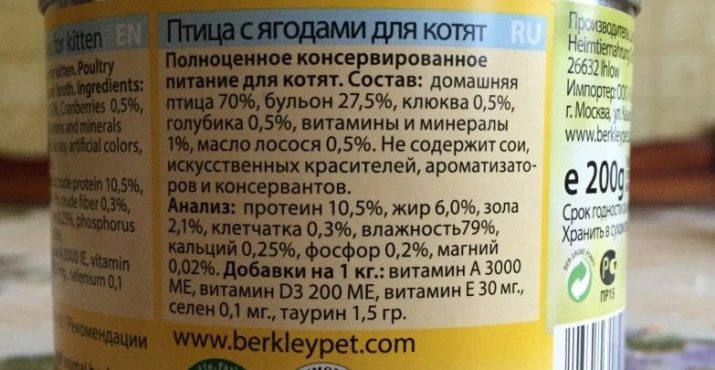
Be sure to take feed from the same manufacturer. Give preference to the product that is sold in proven pet stores. Do not take products from grocery supermarkets. The smaller the daily amount of feed indicated on the packaging in the table, the better and more nutritious the feed. So, good wet food is 5% of the weight of the animal. Average indicators:
| Kitten age (months) | Daily requirement (g) |
| 2-3 | 170-210 |
| 3-6 | 210-300 |
| 6-9 | 210-300 |
| 9-12 | 170-255 |
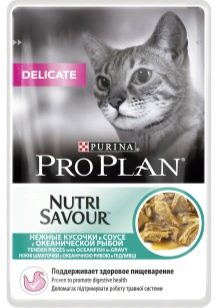
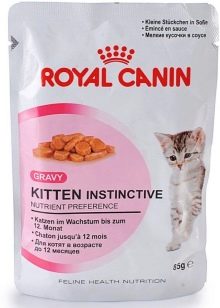
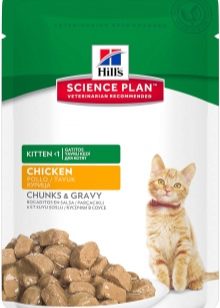
Feeding frequency
Small kittens under 3 months old are recommended to be fed frequently, but in small portions. Further, the feline child can be transferred to three meals a day. From 5 to 12 months, the pet should gradually get used to two meals a day. Usually it all depends on the weight and breed of the animal, but more often cats are larger than cats, and therefore female representatives of most breeds can be fed once a day.
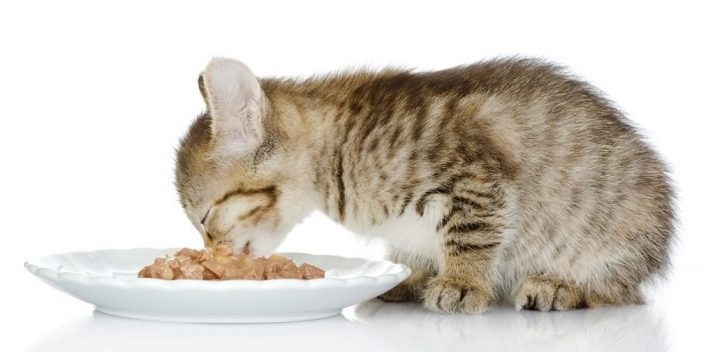
In order for a pet to develop a habit of eating at a certain time from childhood, it is recommended to adjust it to suit your regime. For example, if the owner gets up at 8.00 in the morning and comes home from work at 18.00, then in the morning it is recommended to feed the animal immediately after waking up, and it is better to shift the evening feeding session to a later time, for example, at 20.00. Moreover, no one is immune from force majeure, and if the owner has to stay late at work or in a traffic jam, the pet will not starve, because he is already used to having supper at 8 pm.
If in 20 minutes the animal has not eaten the proposed portion, then remove the food.
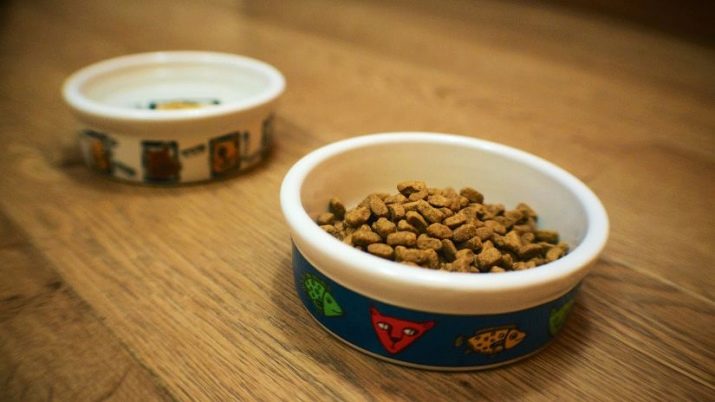
It is not recommended to leave food in the bowl until the next meal. If it is a wet product, then it will quickly deteriorate, and dry granules that are constantly in the bowl can lead to overeating and weight gain of the pet, and this, as already noted, threatens serious health problems.
For a kitten's nutritional requirements, see the next video.
































